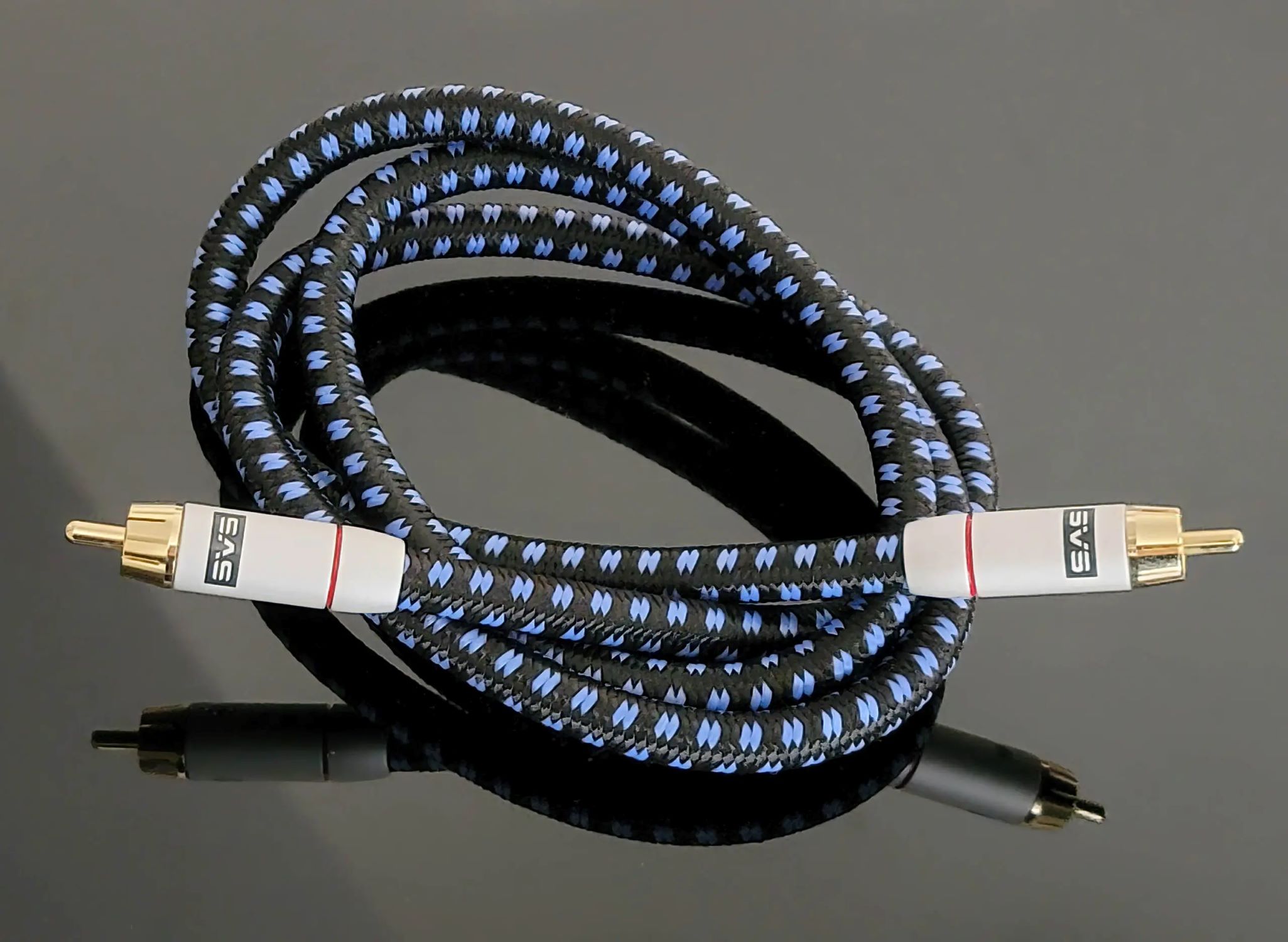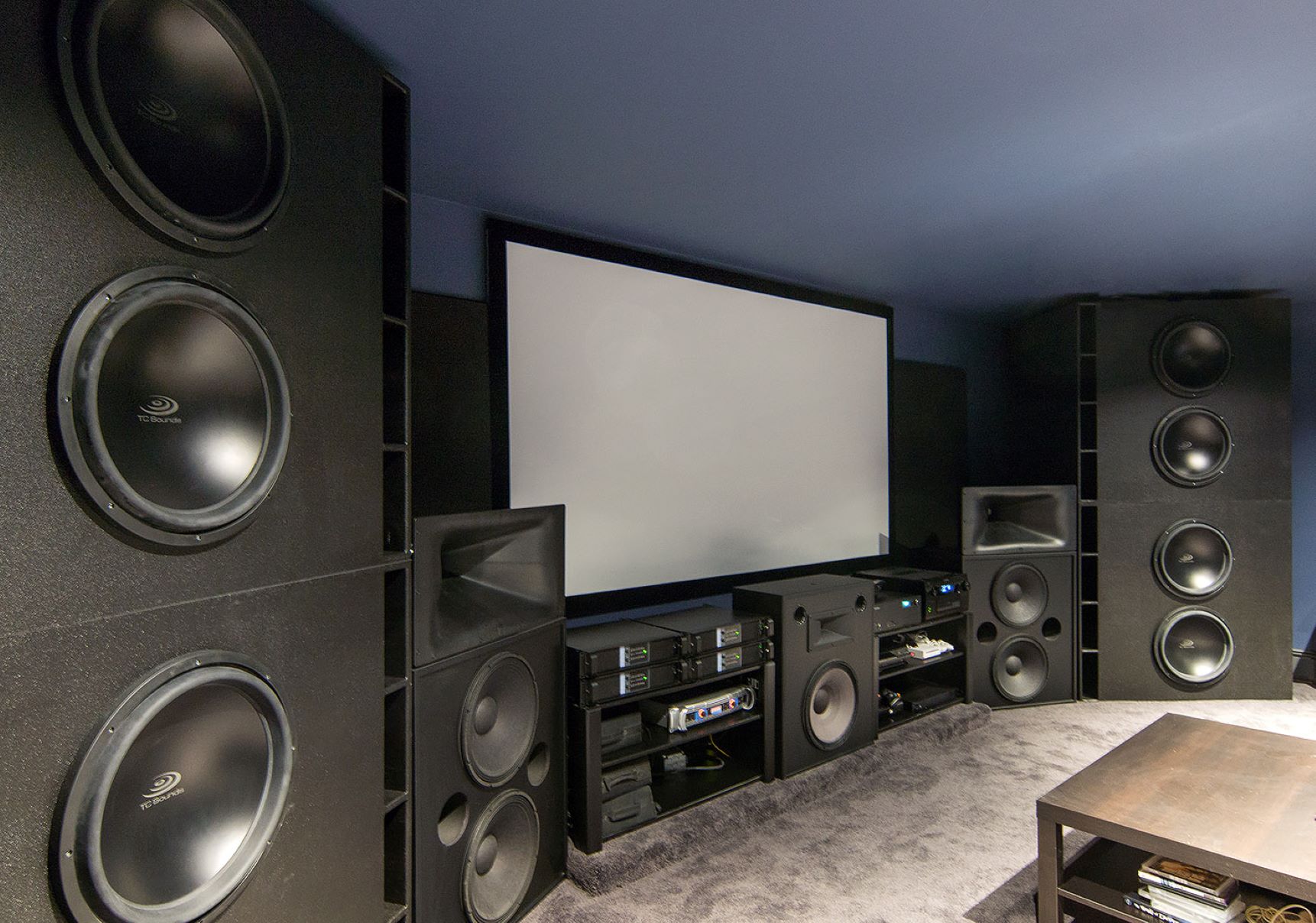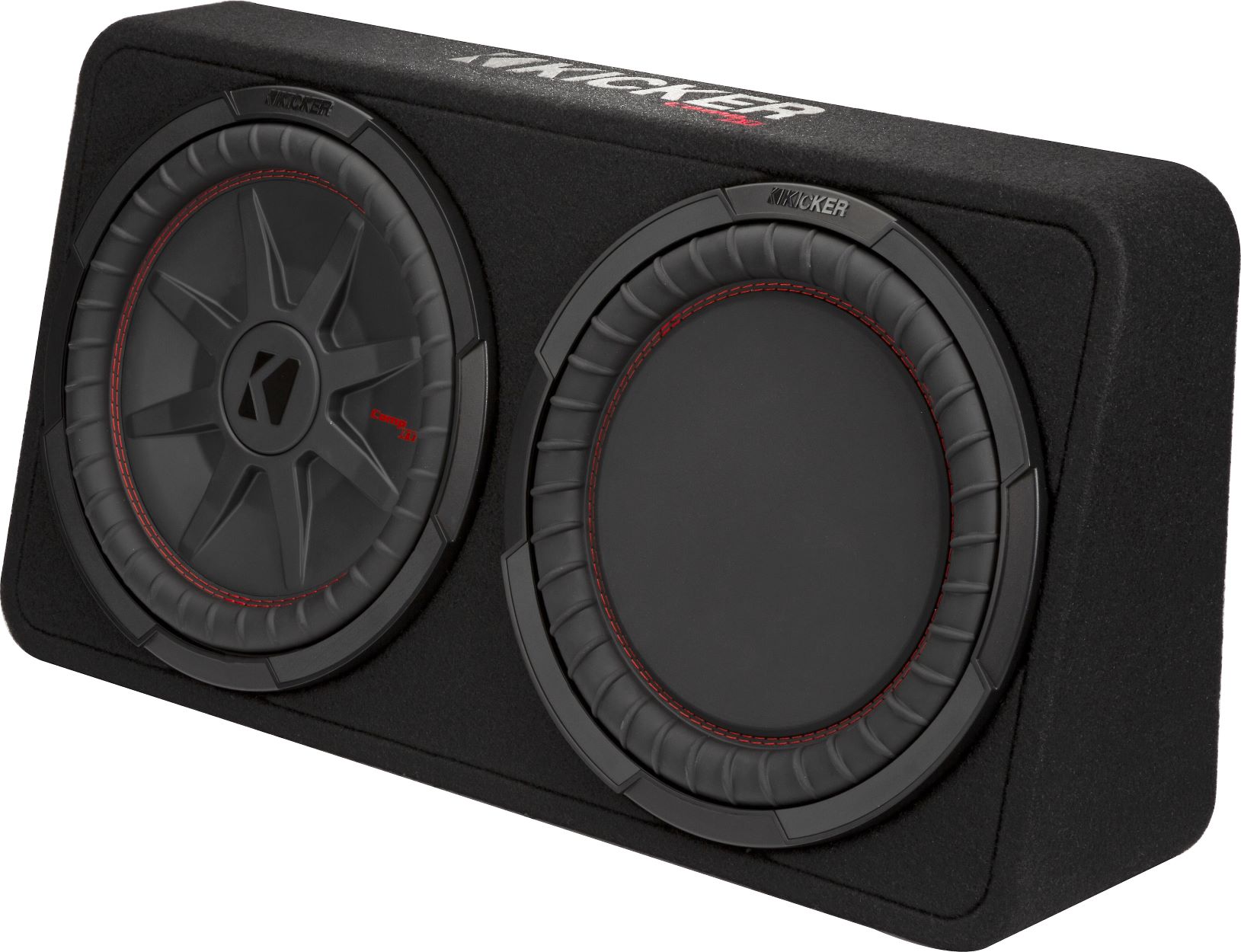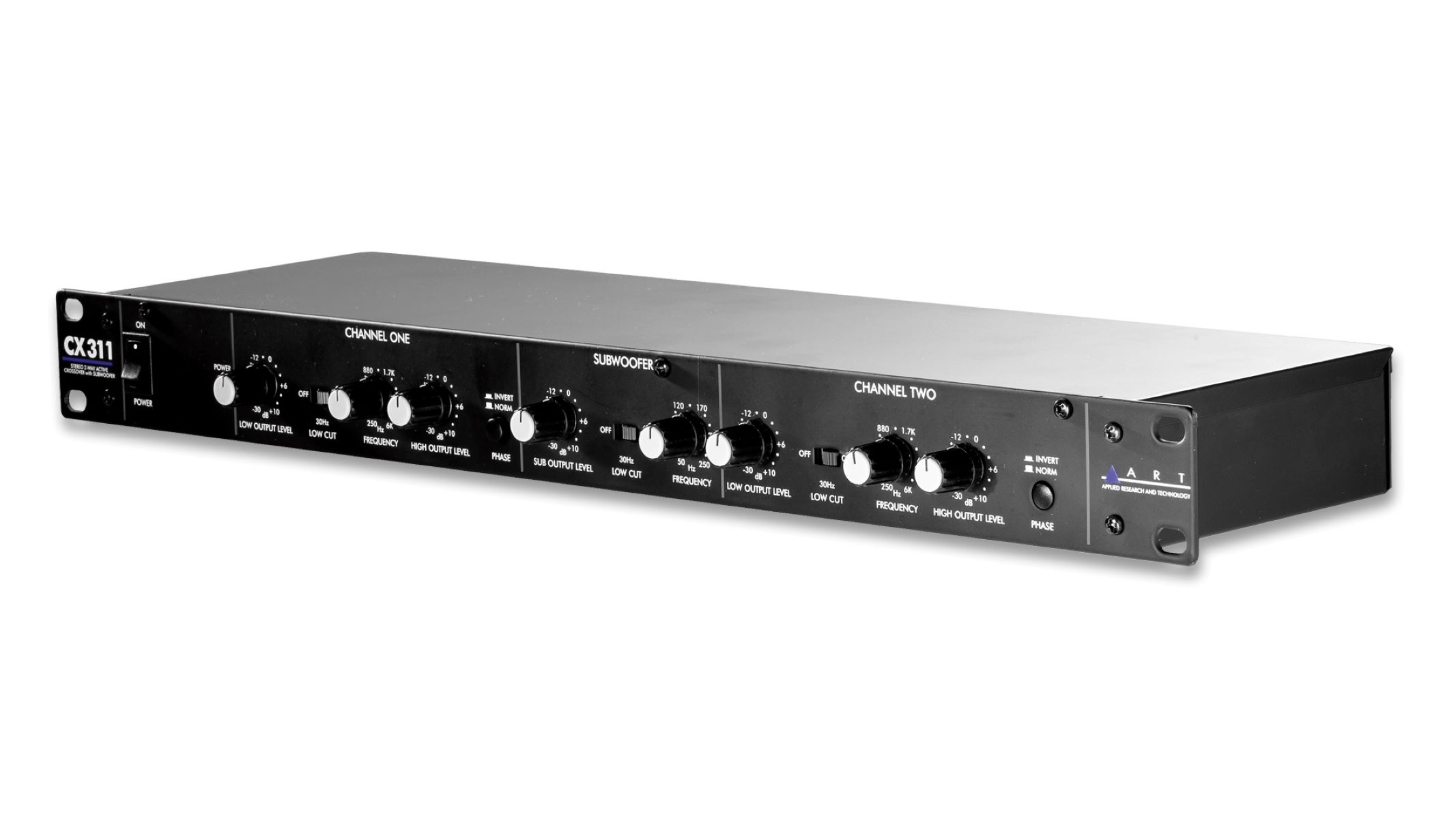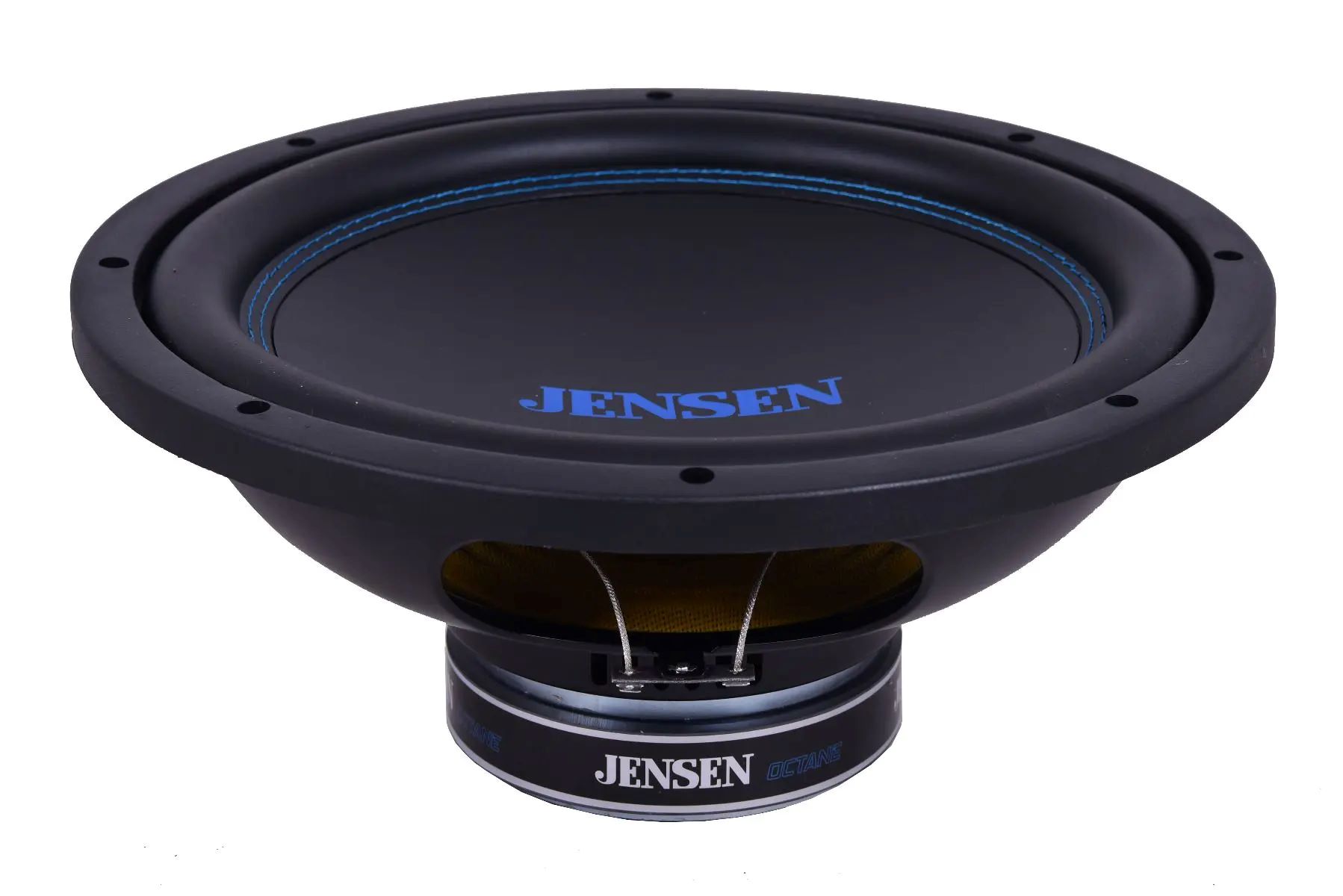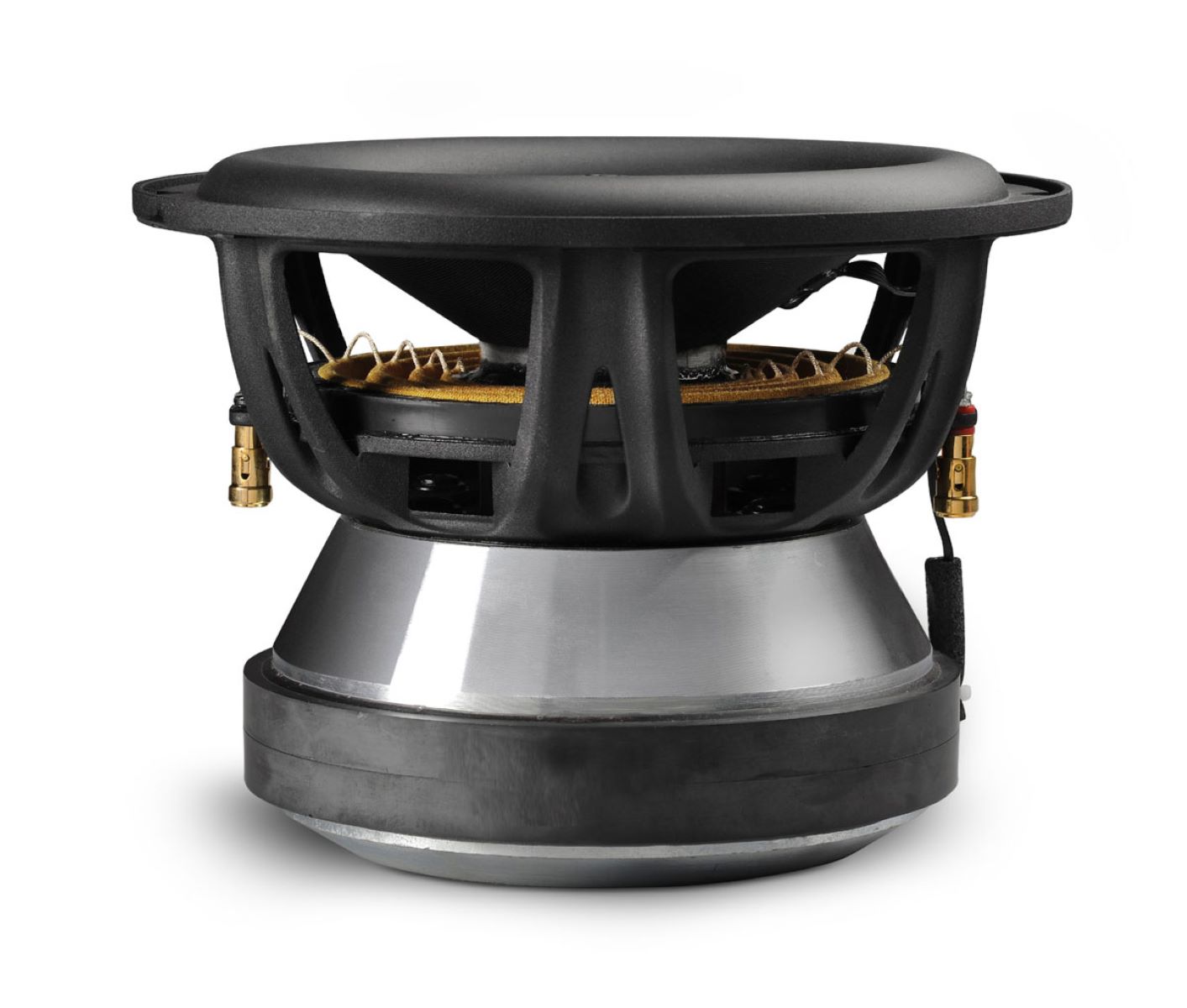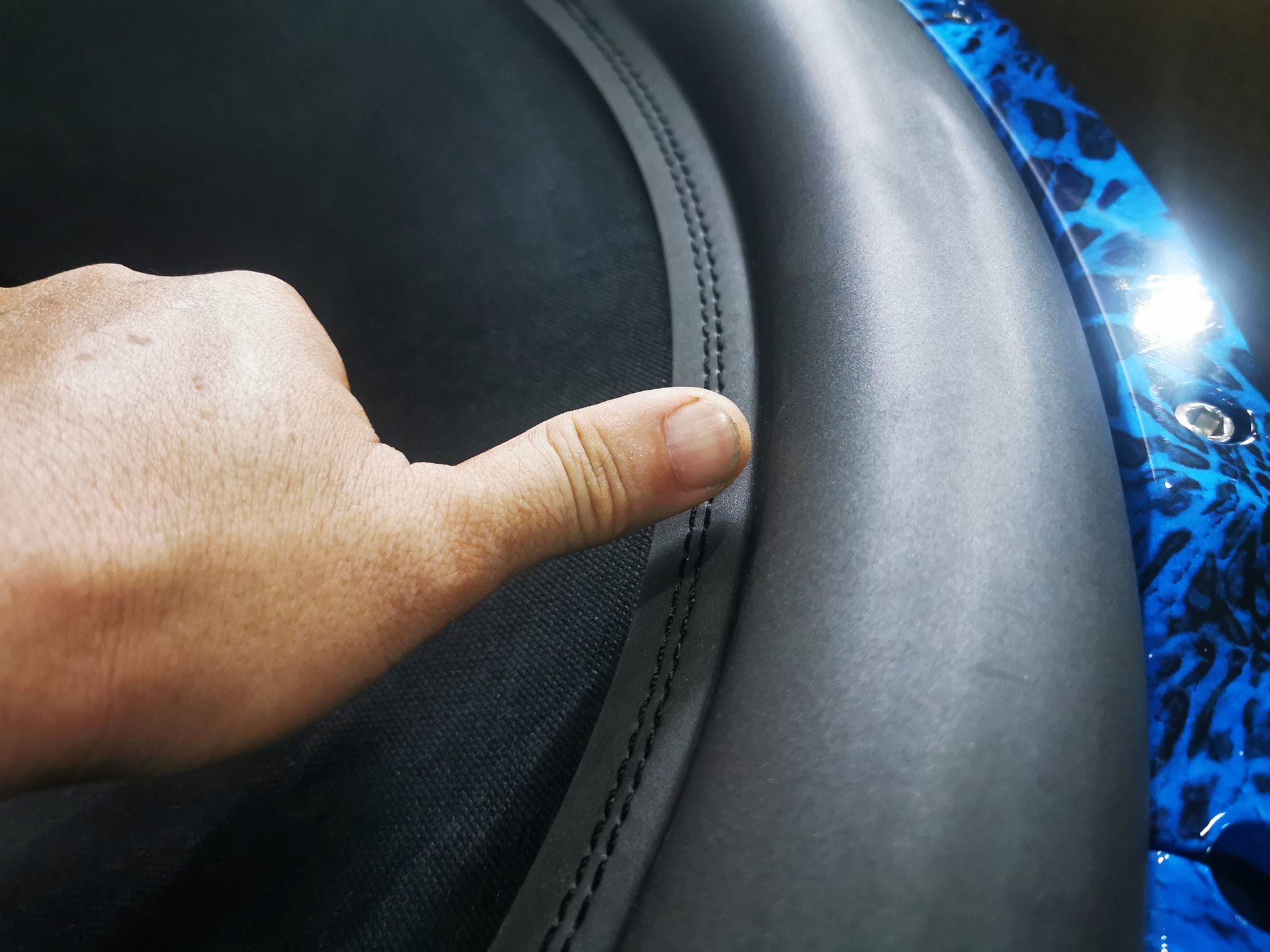Home>Devices & Equipment>Subwoofer>What Is An Active Subwoofer


Subwoofer
What Is An Active Subwoofer
Published: January 20, 2024
Looking to enhance your audio experience? Discover what an active subwoofer can do for your sound system. Get deep, powerful bass with a subwoofer designed to deliver exceptional low-frequency performance.
(Many of the links in this article redirect to a specific reviewed product. Your purchase of these products through affiliate links helps to generate commission for AudioLover.com, at no extra cost. Learn more)
Table of Contents
Introduction
Welcome to the world of deep bass and immersive audio experiences. When it comes to enhancing the audio quality of your home theater or sound system, there’s nothing quite like the power and richness that a subwoofer brings to the mix. And among the various types of subwoofers available, active subwoofers stand out as a popular and effective choice for audio enthusiasts.
Active subwoofers, also known as powered subwoofers, are specially designed speakers that are solely responsible for reproducing low-frequency sounds, commonly referred to as bass. They are designed to handle the low-frequency range more efficiently, resulting in cleaner, more impactful bass reproduction.
Unlike passive subwoofers, which require an external amplifier to power them, active subwoofers have a built-in amplifier. This integrated amplifier allows for better control and optimization of the bass response, making active subwoofers a more convenient and versatile option.
In this article, we will delve into the world of active subwoofers, exploring how they work, their advantages and disadvantages, key factors to consider when choosing one, and some popular brands to look out for. So, whether you’re a novice looking to upgrade your audio setup or an audiophile seeking to unleash the full potential of your sound system, let’s dive into the world of active subwoofers and discover why they are a must-have component for any serious audio enthusiast.
Definition of an Active Subwoofer
An active subwoofer is a type of speaker specifically designed to reproduce low-frequency sounds, or bass. It is called “active” because it has an onboard amplifier built into the speaker enclosure, which powers the subwoofer driver and controls its performance. Unlike passive subwoofers, which rely on an external amplifier for power, active subwoofers are self-powered and can operate independently.
The primary purpose of an active subwoofer is to enhance the audio experience by delivering deep, impactful bass that adds richness and depth to music, movies, and other audio content. They are typically larger and heavier than regular speakers, as they house a more substantial driver and amplifier components to handle the demanding low-frequency range.
Active subwoofers come in various sizes and designs, ranging from compact units suitable for small rooms to larger units capable of producing earth-shaking bass in larger spaces. They are commonly used in home theaters, music studios, and automotive sound systems, but can also be found in commercial settings like concert venues or clubs.
It’s important to note that an active subwoofer is just one part of a complete audio system. It works in conjunction with other speakers, such as satellite speakers or bookshelf speakers, to provide a balanced overall sound. The active subwoofer is responsible for handling the low-frequency range, while the other speakers take care of the midrange and high-frequency sounds.
Overall, an active subwoofer is a powerful and essential component for anyone seeking to enhance their audio setup with deep, impactful bass. By adding an active subwoofer to your system, you can elevate your audio experience to a whole new level, immersing yourself in the full spectrum of sound and feeling the music or movie come alive.
How Active Subwoofers Work
Active subwoofers may seem complex, but their operation can be broken down into a few simple steps. Understanding how they work can help you appreciate the engineering behind these powerful bass machines.
At the heart of an active subwoofer is the built-in amplifier, which powers the subwoofer driver and controls its performance. The amplifier receives an audio signal from the main audio source, such as a receiver or preamp, and processes it specifically for the subwoofer.
When the audio signal reaches the amplifier, it undergoes several stages. First, the signal is equalized to match the performance capabilities of the subwoofer driver. This equalization process compensates for any irregularities in the subwoofer’s frequency response, ensuring accurate and balanced bass reproduction.
Next, the equalized audio signal is sent to the amplifier’s power stage, where it is amplified to a level suitable for driving the subwoofer driver. The amplifier increases the power of the signal, which translates into the ability to move the subwoofer driver with sufficient force to generate deep bass frequencies.
Once amplified, the audio signal is sent to the subwoofer driver, which consists of a large cone or diaphragm specifically designed to move air and reproduce low-frequency sounds. The subwoofer driver moves back and forth rapidly, creating changes in air pressure that result in the production of bass frequencies. These vibrations are then radiated into the room, filling it with deep, powerful bass.
Active subwoofers usually have additional controls and features, such as volume control, phase control, and crossover adjustment. These allow you to fine-tune the subwoofer’s performance to suit your specific room acoustics and personal preferences. The volume control, for example, lets you adjust the level of bass relative to the other speakers in your system, while the phase control aligns the subwoofer’s output with the rest of the audio for optimal sound integration.
In summary, active subwoofers work by receiving an audio signal, equalizing and amplifying it, and then driving a specialized subwoofer driver to produce deep bass frequencies. Their built-in amplifier and advanced features make them a convenient and powerful solution for anyone looking to add deep, impactful bass to their audio setup.
Advantages of Active Subwoofers
Active subwoofers offer a range of advantages that make them a popular choice among audio enthusiasts. Here are some key benefits of incorporating an active subwoofer into your audio setup:
- Convenience: One of the significant advantages of active subwoofers is their convenience. Since they have a built-in amplifier, there’s no need to purchase and connect an external amplifier like with passive subwoofers. This eliminates the hassle of matching amplifier power and ensures compatibility between the subwoofer and amplifier.
- Better Bass Performance: The integration of the amplifier directly into the subwoofer enclosure allows for better control and optimization of the bass performance. The amplifier is specifically designed to work with the subwoofer driver, resulting in cleaner, more accurate bass reproduction. This can lead to a more immersive listening experience, particularly when it comes to deep bass frequencies.
- Flexibility: Active subwoofers often come with various controls and adjustment options. These features allow you to fine-tune the subwoofer’s performance to match your specific room acoustics and personal preferences. You can adjust parameters such as volume, phase, and crossover frequency to achieve the best possible integration with your other speakers and create a balanced audio experience.
- Space-Saving: Active subwoofers are designed to be compact and self-contained, saving precious space in your audio setup. Unlike passive subwoofers that require separate amplifiers and additional wiring, active subwoofers streamline the setup process and reduce clutter. This makes them ideal for smaller rooms or setups where space is limited.
- Improved Power Efficiency: Active subwoofers are designed with power efficiency in mind. The integrated amplifier is optimized to deliver the appropriate amount of power to the subwoofer driver, eliminating wasteful power consumption. This not only helps to reduce energy costs but also ensures that the subwoofer can deliver consistent and impactful bass without straining the amplifier.
Whether you’re building a dedicated home theater, setting up a high-quality audio system, or simply looking to enhance the bass performance of your current setup, active subwoofers offer numerous advantages. Their convenience, improved bass performance, flexibility, space-saving design, and power efficiency make them a compelling choice for any audio enthusiast looking to elevate their listening experience to new depths.
Disadvantages of Active Subwoofers
While active subwoofers offer many advantages, it’s important to consider some potential drawbacks before making a purchasing decision. Here are a few disadvantages to keep in mind:
- Higher Cost: Active subwoofers tend to be more expensive compared to passive subwoofers. This is due to the inclusion of a built-in amplifier and additional electronics. The higher cost can be a limiting factor for those on a budget or looking for a more affordable audio solution.
- Limited Customization: Active subwoofers often come with preset controls and adjustment options. While these presets are designed to provide a balanced bass response, they may not offer the level of customization that some audio enthusiasts desire. This can be a disadvantage for those looking for finer control over the subwoofer’s performance.
- Reduced Upgradeability: With passive subwoofers, you have the flexibility to upgrade the amplifier separately from the subwoofer driver. This allows you to easily improve the overall performance by purchasing a more powerful or higher-quality amplifier. However, with active subwoofers, the amplifier is integrated into the enclosure, limiting the upgrade options and potentially requiring the purchase of a new subwoofer in the future.
- Additional Wiring: While active subwoofers simplify the setup process by eliminating the need for an external amplifier, they may still require additional wiring for power. This means running an extra power cord from the subwoofer to an available electrical outlet. Depending on your setup, this can add complexity and potentially create cable management challenges.
- Size and Weight: Active subwoofers, especially those designed for more powerful bass reproduction, can be quite large and heavy. This can make them challenging to move or position, especially if you need to readjust your audio setup. It’s important to consider the size and weight of the subwoofer and ensure that it can fit comfortably in your desired location.
While these disadvantages are worth considering, they should not overshadow the overall benefits of active subwoofers. The higher cost, limited customization, reduced upgradeability, additional wiring, and size and weight concerns should be weighed against the convenience, improved bass performance, and other advantages that active subwoofers bring to your audio setup.
Factors to Consider When Choosing an Active Subwoofer
Choosing the right active subwoofer for your audio setup can greatly enhance your listening experience. To ensure you make an informed decision, here are some key factors to consider:
- Room Size: The size of your room plays a significant role in determining the appropriate size and power of the active subwoofer. Larger rooms may require more powerful subwoofers to fill the space with deep bass, while smaller rooms may benefit from compact subwoofers that provide a balanced bass response without overpowering the room.
- Frequency Response: The frequency response range indicates the lowest and highest frequencies that the subwoofer can reproduce. You’ll want a subwoofer with a low-frequency response that matches the deep bass frequencies you want to enjoy. Look for a subwoofer with a range that goes as low as possible for rich and immersive bass reproduction.
- Power Output: The power output of the subwoofer determines its ability to deliver impactful bass. Consider the power rating, typically measured in watts, to ensure that it can handle the demands of the content you’ll be listening to. A higher power output generally results in a more dynamic and robust bass response.
- Integration with Existing Setup: It’s important to consider how the active subwoofer will integrate with your existing audio setup. Look for subwoofers with adjustable crossover settings that allow you to seamlessly blend the bass output with your other speakers. Additionally, consider the connectivity options available to ensure compatibility with your audio source and other devices.
- Room Acoustics: The acoustics of your room can have a significant impact on the performance of the subwoofer. Factors such as the size and shape of the room, as well as the presence of reflective surfaces, can affect bass response. Some subwoofers offer room correction features, such as built-in equalizers or automatic calibration systems, which can help optimize the bass performance in your specific room.
- Budget: Consider your budget when choosing an active subwoofer. There is a wide range of options available at various price points, so it’s important to find a balance between your desired performance and affordability. Keep in mind that investing in a higher-quality subwoofer can provide better longevity and improved overall audio experience.
By carefully considering these factors, you can select an active subwoofer that is well-suited to your needs and preferences. Remember that finding the right balance between room size, frequency response, power output, integration, room acoustics, and budget will result in a subwoofer that delivers deep, impactful bass and enhances your overall audio experience.
Popular Brands of Active Subwoofers
When it comes to active subwoofers, there are several reputable brands that have become well-known for their high-quality performance and reliable products. Here are a few popular brands to consider:
- SVS: SVS is renowned for its range of powerful and precise active subwoofers. Their subwoofers are built using advanced technologies and feature robust amplifiers, high-quality drivers, and innovative designs that deliver deep bass with exceptional accuracy and impact.
- Klipsch: Klipsch is a respected name in the audio industry, known for their commitment to delivering immersive and dynamic sound experiences. Their active subwoofers combine solid construction, powerful amplification, and proprietary driver technology to produce authoritative bass that complements any audio system.
- Elac: Elac specializes in creating active subwoofers that prioritize both audio performance and aesthetics. Their subwoofers are crafted with precision drivers, efficient amplifiers, and innovative design elements to deliver deep, controlled bass response that seamlessly integrates with the rest of your audio setup.
- JL Audio: JL Audio is recognized for its premium performance and engineering excellence in the world of subwoofers. Their active subwoofers are designed with meticulous attention to detail and feature advanced technologies such as patented driver designs and powerful amplifiers for accurate and impactful bass reproduction.
- Yamaha: Yamaha is a well-established brand known for its audio equipment and expertise. Their active subwoofers offer a combination of power, performance, and versatility. With features like adjustable crossover frequencies and room correction technology, Yamaha subwoofers provide an immersive and tailored bass experience.
These are just a few of the notable brands in the active subwoofer market. Each brand brings its own unique approach and strengths to the table, so it’s essential to research and compare models from different brands to find one that best fits your audio needs and preferences.
It’s worth noting that the popularity of subwoofer brands may vary depending on your region, availability, and individual preferences. Reading customer reviews and seeking expert opinions can also provide valuable insights into the performance and reliability of specific models.
Ultimately, the choice of brand will depend on your specific requirements, budget, and personal taste. Whether you’re looking for deep and powerful bass, precise and accurate low-frequency reproduction, or a perfect blend with your existing speakers, these popular brands offer a range of options to suit your needs and elevate your audio experience.
Conclusion
Active subwoofers are an essential component for anyone seeking to enhance their audio setup with deep, impactful bass. These powered speakers offer numerous advantages, including convenience, improved bass performance, flexibility, space-saving design, and power efficiency. By incorporating an active subwoofer into your system, you can elevate your listening experience to new depths and immerse yourself in the full spectrum of sound.
When choosing an active subwoofer, it’s important to consider factors such as room size, frequency response, power output, integration with your existing setup, room acoustics, and budget. By carefully evaluating these factors, you can select a subwoofer that is best suited to your needs and preferences.
There are several popular brands to choose from, each known for their quality and reputation in the audio industry. Brands like SVS, Klipsch, Elac, JL Audio, and Yamaha offer a range of active subwoofers with different features and capabilities, allowing you to find the perfect match for your audio setup.
Ultimately, the key is to find a balance between performance, affordability, and personal preferences. By investing in a high-quality active subwoofer and optimizing its settings to suit your room and preferences, you can enjoy a more immersive audio experience that truly brings your music, movies, and games to life.
So go ahead, explore the world of active subwoofers and discover the power and richness that deep bass brings to your audio setup. Upgrade your sound system today and feel the vibrations that will transform the way you listen to and experience sound.


